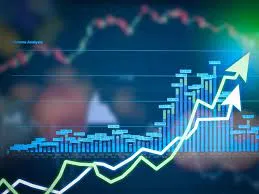
Decline in growth
Gross Domestic Product (GDP) growth figures for the second quarter of 2023 are higher than that in the first quarter, at 4.1 percent compared to 3.32 percent. However, these are still much lower figures than the average seen five years before the Covid-19 pandemic occurred which was at an average of 7.1 percent. In the first six months of the year, other than the agro-forestry-fishery industry showing a significant growth rate, the remaining business sectors showed high inventory rates.
This clearly indicates that the very foundation for economic recovery is unstable and uncertain. This is also reflecting risks in indicators such as with the manufacturing and processing industries concerned with exports and real estate which are declining at a very fast pace. The public investment sector, which is considered one of the strongest pillars for economic growth is still at a very low level, although it has more or less helped promote the growth of the construction industry. Electricity production and distribution have improved, but mainly due to better weather conditions. The catering and accommodation services industries have not seen the expected sudden growth like in previous years, although it should have grown strongly because of the high volume of travelers during peak tourist season. Financial services are also growing at a slow pace while the real estate sector is continuing to decline.
If we look very closely at every industry, we see the decline quite clearly. For instance, industrial production is experiencing a severe and sharp decline. The new Value Creation Index of the whole industry in general and the manufacturing and processing industry in particular increased by 1.56 percent and 1.18 percent, respectively. Although in the second quarter of 2023 the index of these industries remained stationary and mostly unchanged.
The slowing down of production is also closely related to the health of enterprises. It is now evident that most of the businesses are deteriorating. The number of newly established and reopened enterprises is very few, while the number of temporarily suspended and dissolved enterprises has increased.
Weak demand
In the overall general context, the inflation index is on a downward spiral. This is contrary to all previous forecasts. The cause of the downward spiraling of inflation is due to weak aggregate demand of the economy. At present, all three main driving forces that stimulate aggregate demand in the economy have drastically declined.
First, the total retail sales that had increased well in the first quarter of 2023 slowed down in the second quarter. The total retail sales of consumer goods and services in the first quarter of 2023 increased by 13.9 percent, but in the first six months of the year, they only increased by a mere 10.9 percent. Consumption growth slowed down as a result of high-interest rates maintained from the beginning of the year to May of this year, causing the incomes and assets of people to decrease greatly.
Second, although public investment in recent months has increased quite well it is still not enough to be the main driving force to stimulate economic growth in tandem with other investment components that are weak. Investment from the State has increased strongly but is still low and at a level much below the target plan, due to lack of motivation, legal obstacles, and high raw material costs. Private investment is moving far too slowly due to high-interest rates and the difficulties involved in accessing credit and issuances of bonds and stocks. This situation has been due to a decline in consumer confidence. Although Foreign Direct Investment (FDI) is stable, it may not increase strongly because of unfavorable external factors, the slowdown in the global economy, and the lack of export orders.
Third, imports and exports, which are one of the main pillars of growth, have decreased more sharply over the last quarters. Commodity exports in the first quarter of 2023 decreased by 10 percent and in the second quarter decreased by 14.2 percent. Imports of goods also decreased in the first quarter of 2023 by 13.6 percent, and in the second quarter, they decreased by 22.3 percent.
About 65 percent of export value belongs to FDI enterprises, which shows that domestic manufacturing and exporting enterprises are facing many difficulties. The trend continues to be difficult and the risk of losing orders from major markets is what awaits most of the businesses.
Because of the weakening of aggregate demand, the inflation index tends to decrease. According to calculations, electricity prices and basic wages increased but did not put much pressure on inflation. The average Consumer Price Index (CPI) for the whole year is expected to increase by approximately 3 percent and the basic CPI is set to increase by 3.5 percent to 4 percent.
Looking at the overall economic picture in the first six months of the year, it can be seen that growth recovered slightly but at a low level compared to normal conditions and is at risk of prolonging for many months to come. Therefore, the immediate thing to do is to stimulate the economy and revive the manufacturing sector. Some selective aggregate demand support measures can be used, but a combination of policies to improve potential aggregate supply is urgently needed. Besides, it should only be considered as a short-term solution and temporary implementation, with the aim of stimulating the reaction of businesses and consumers and avoiding instability such as inflation, high exchange rates, and asset price bubbles.
Along with demand stimulus, private investments must be encouraged by lowering lending interest rates, such as by reducing capital costs, increasing access to capital in the stock market, and stimulating consumption. It is necessary to pay attention to controlling money supply growth and avoid rushing to lower the policy interest rate so rapidly.




















